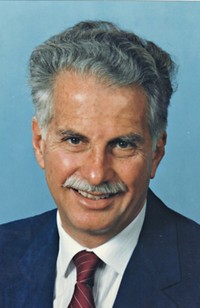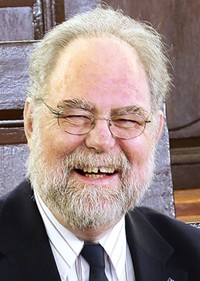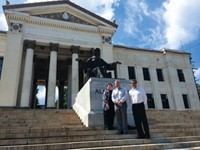Advertisement
Grab your lab coat. Let's get started
Welcome!
Welcome!
Create an account below to get 6 C&EN articles per month, receive newsletters and more - all free.
It seems this is your first time logging in online. Please enter the following information to continue.
As an ACS member you automatically get access to this site. All we need is few more details to create your reading experience.
Not you? Sign in with a different account.
Not you? Sign in with a different account.
ERROR 1
ERROR 1
ERROR 2
ERROR 2
ERROR 2
ERROR 2
ERROR 2
Password and Confirm password must match.
If you have an ACS member number, please enter it here so we can link this account to your membership. (optional)
ERROR 2
ACS values your privacy. By submitting your information, you are gaining access to C&EN and subscribing to our weekly newsletter. We use the information you provide to make your reading experience better, and we will never sell your data to third party members.
Careers
Cuba Offered RefugeFrom Nazi Europe
November 10, 2014
| A version of this story appeared in
Volume 92, Issue 45
I read with interest the C&EN Talks With Hessy Taft (Sept. 8, page 30). As a child, Taft escaped Nazi Europe and lived for seven years in Cuba before immigrating to the U.S. in 1949. She became a chemist and ultimately a professor at St. John’s University.
I have known Hessy for several years as a result of her interactions with Latin American chemists and promotion of chemistry in the region. I do not recall her mentioning her childhood in Cuba. I attribute her generous disposition to her welcome and safety in Latin America at a time when even the U.S. closed its shores to Jewish escapees from Nazi Europe.
Similar feelings of gratitude as well as professional and personal success stories can be found from other Jewish escapees from Nazi Europe who spent many years in Cuba. These include George Rosenkranz (one of the founders of Syntex, which developed numerous steroidal drugs including the first combined oral contraceptive pill) and Ernest Eliel (former ACS president and chair of the ACS Board of Directors and a Priestley Medalist).
Eliel also was a founding member and president of the U.S.-Mexico Foundation for Science and participated in many activities to improve chemistry and chemical education in Mexico and other Latin American countries.
Eusebio Juaristi
Mexico City





Join the conversation
Contact the reporter
Submit a Letter to the Editor for publication
Engage with us on Twitter